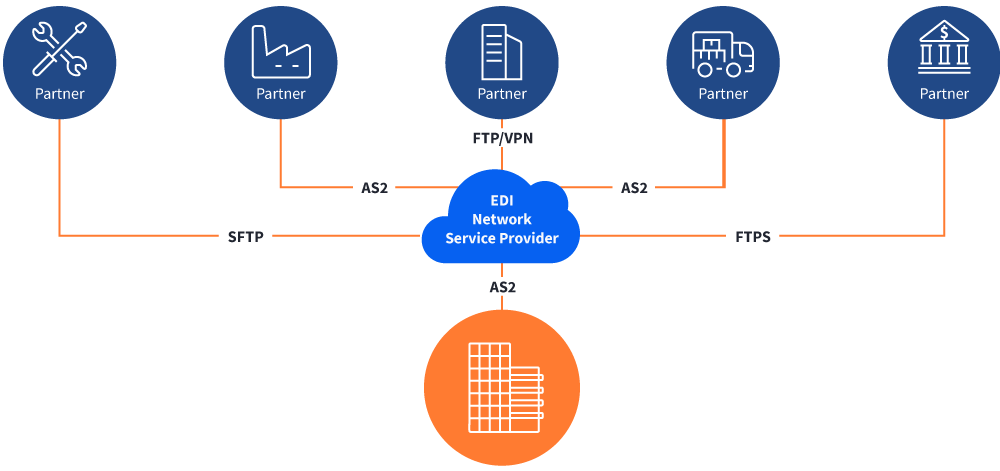Direct EDI
Enabling Businesses to Exchange EDI Documents via a Secure, Point-to-Point Connection over the Internet.
Direct EDI, which is sometimes called Point-to-Point EDI, has been used by companies for years. It was viewed historically as an alternative to a VAN. It establishes a single secure line between two business partners. In this approach, an organization must communicate with each business partner individually, which can mean managing hundreds or thousands of separate connections.
In the direct connection approach, you and your business partner connect directly via the Internet using the same communication method or protocol. This approach can become very complex and resource intensive if different business partners are using different communication protocols, which is the norm in most trading communities. Your system must be able to support all of these different, required protocols.
This approach is most commonly used by large corporations that have business partners with whom they exchange a high volume of EDI documents, frequently.
If you choose the direct connection model, you will need to purchase a software package that enables you to use all the agreed upon protocols, such as AS2, SFTP, FTPS. Then you will need to agree with each of your partners on (1) which of these communication methods or protocols you will use and (2) the specific protocol settings to be used when exchanging your files of EDI documents. You should also consider a software solution that is future proofed to accommodate future requirements.
The graphic below illustrates the direct connection scenario.

This model can be very complex because of the wide variety of communication protocols that must be used and supported. Very few businesses today connect directly to all of their business partners.
Direct EDI Resources
Learn what is AS2, how it works, and is implemented: Download the AS2 White Paper
